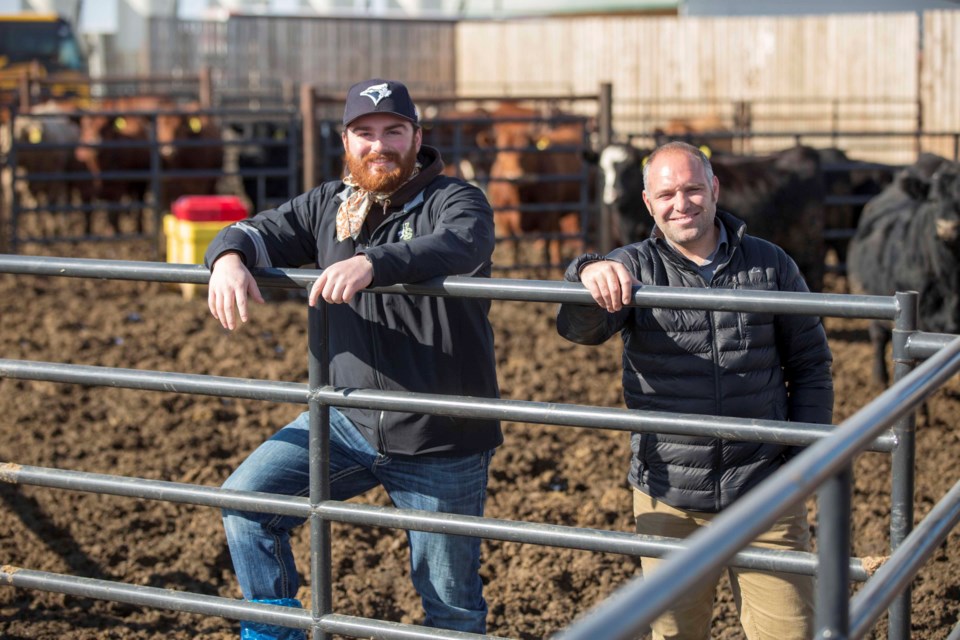rotection against all dominant strains of the virus in swine, increase production, and reduce costs, helping farmers across Saskatchewan and throughout North America.
Tracking antimicrobial resistant E. coli in chickens: Infections in chickens caused by E. coli can kill up to 20 per cent of a flock, and are the leading cause of economic loss in the industry in Canada. Using whole genome sequencing, USask microbiologist and VIDO-InterVac scientist Aaron White will lead a research team to track and predict virulence and antimicrobial resistance in different strains of E. coli to better understand the cause of the infections. VIDO-InterVac scientist Jo-Anne Dillon and veterinary microbiologist Dr. Joe Rubin are part of the team.
Testing for Salmonella dublin in dairy herds: Salmonella dublin, a commonly multiple-drug resistant variety of salmonella bacteria, poses significant risks to cattle health and is increasingly prevalent in western Canadian dairy operations. While infections in humans are rare, and associated with consuming unpasteurized milk products and undercooked meat, the symptoms can be severe—S. dublin causes more frequent and longer hospital stays than do other strains. USask cattle researchers Dr. Christopher Luby and Dr. Kamal Gabadage are aiming to improve existing testing methods to increase accuracy in identifying which cows carry the bacteria.
Examples of livestock research projects with potential to reduce environmental impact include:
Using pea starch for swine feed: Increased global demand for pea protein has led to a surplus of pea starch, leftover from the extraction process. USask researcher Rex Newkirk, Saskatchewan Ministry of Agriculture Endowed Research Chair in Feed Processing Technology, will determine safe levels of the starch to include in pig feed to increase efficiency and help producers.
Hybrid fall rye as a new forage source for beef cattle: Hybrid fall rye, a new crop developed in Germany, is a hardy winter crop with potential to dramatically increase yields, protect the environment, increase resistance to disease, and improve farmers’ bottom lines. USask cattle researcher Greg Penner will study the rye for suitability to feed cattle and inform producers of the results.
Strategies to address mineral nutrition in the face of poor water quality: Sulfate-contaminated water is a major potential problem for livestock in Saskatchewan, causing nutrient deficiency and reproductive problems in cows. Penner has also been awarded an ADF grant to test whether supplementing cattle with the active ingredient in Pepto-Bismol or other dietary additives may be the solution.
Reducing greenhouse gas emissions from cattle feedlots: USask engineering professor Terry Fonstad will determine the most environmentally friendly, efficient way to store, transport, and fertilize soil with cattle manure, examining the economics and total environmental footprint of various practices. Fonstad will also measure greenhouse gases in a closed cattle barn in order to compare different strategies.
The funding commitment also includes $375,000 to support 10 undergraduate summer research projects per year over five years. Co-ordinated by Dr. Elisabeth Snead with help from Saskatchewan Ministry of Agriculture scientists, the projects provide doctor of veterinary medicine students with exposure to both research and hands-on experience working with food animals and other animals important in agriculture, with the goal of making students more comfortable and confident dealing with these species during their professional careers after graduation.
Read a backgrounder from the Saskatchewan Ministry of Agriculture with details on all the projects.
The ADF program is supported through the Canadian Agricultural Partnership, a five-year $388-million investment by the federal and provincial governments in strategic initiatives for Saskatchewan agriculture.



